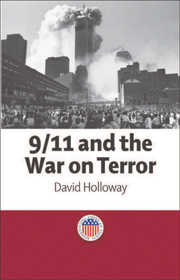Book contents
- Frontmatter
- Contents
- List of Illustrations
- Series Editors' Preface
- Acknowledgements
- Introduction
- 1 History
- 2 Politics
- 3 Mass Media
- 4 Cinema
- 5 Literature
- 6 Photography and Visual Art
- Conclusion
- Appendix A Timeline
- Appendix B Synoptic biographies
- Annotated bibliography of further reading and texts cited
- Index
Conclusion
Published online by Cambridge University Press: 05 August 2013
- Frontmatter
- Contents
- List of Illustrations
- Series Editors' Preface
- Acknowledgements
- Introduction
- 1 History
- 2 Politics
- 3 Mass Media
- 4 Cinema
- 5 Literature
- 6 Photography and Visual Art
- Conclusion
- Appendix A Timeline
- Appendix B Synoptic biographies
- Annotated bibliography of further reading and texts cited
- Index
Summary
One of the more remarkable early representations of 9/11 was an independent portmanteau film, 11'09”01 (2002) – a film comprising eleven segments by eleven different directors, from Iran, France, Egypt, Bosnia-Herzegovina, Burkina Faso, Britain, Mexico, Israel, India, the US and Japan, sequenced in that order. Five of the films, including the American submission directed by Sean Penn, were set wholly or partly in New York, with the rest set in diverse locations around the world. The film's publicity materials emphasised that every director had enjoyed complete freedom of expression to explore what 9/11 meant to them in the contexts of their own cultures and backgrounds. The only stipulation was that each film should be eleven minutes and nine seconds long – a requirement dismissed as a tasteless gimmick by hostile reviewers in the US, but one that allowed 11'09”01 to make the same formal claims to a democratic representation of events as a photography collection like here is new york. Where here is new york seemed stuck in the interiority of an American trauma, though, 11'09”01's cosmopolitan crew of directors from around the world forged a powerful, relativist aesthetic, multiplying the international contexts in which the attacks could be gauged – historically, politically, socially, culturally, emotionally, linguistically, geographically, aesthetically – and restoring in the process a series of critical distances on contemporary events that seemed largely missing from here is new york's iterative return to the traumatic primal scene.
- Type
- Chapter
- Information
- 9/11 and the War on Terror , pp. 154 - 158Publisher: Edinburgh University PressPrint publication year: 2008



